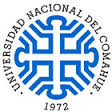JavaScript is disabled for your browser. Some features of this site may not work without it.
Mostrar el registro sencillo del ítem
| dc.creator | Lescano, M.N | |
| dc.creator | Quintero, C. | |
| dc.creator | Farji-Brener, A. | |
| dc.creator | Balseiro, E. | |
| dc.date | 2022 | |
| dc.date.accessioned | 2022-08-10T13:46:33Z | |
| dc.date.available | 2022-08-10T13:46:33Z | |
| dc.identifier.uri | http://rdi.uncoma.edu.ar/handle/uncomaid/16831 | |
| dc.description.abstract | 1. Enhanced soil nutrient availability often favors herbivore performance by bringing the carbon:nutrient ratio of plants closer to herbivore requirements. However, a surplus of nutrients can promote a too low carbon:nutrient ratio in plants, making them of poor quality for herbivores. In addition, increased soil nutrients can trigger cascading effects altering higher trophic levels, resulting in indirect costs for herbivores. 2. Through experiments under three increasing fertilization levels (unfertilized, NPK-rich, and 2NPK-rich soils), we studied how the enhancement of soil nutrient availability, by modifying the C:N ratio of thistles, affects the performance and homeostatic response of the aphids, and the consequent ant attraction. 3. Fertilized soils increased the biomass and reduced the C:N ratio of thistles, also increasing aphid abundance. The stoichiometric homeostasis of aphids was modulated through changes in honeydew production and composition; fertilization treatments reduced by more than half the quantity of honeydew secreted and lead to 2.5 to 6.4 times higher honeydew N concentration compared with the unfertilized treatment. In addition, in the highest fertilization treatment, the aphids increased the content of uric acid (a waste toxic compound involved in amino acid deamination) excreted in their honeydew. Aphid-infested thistles had the highest number of aphid-tending ants when they grew on intermediate rich-substrates. Ants selected honeydew with a lower C:N ratio (compared to unfertilized plants), but fewer workers patrolled plants with the highest fertilization treatment likely due to increased uric acid in the honeydew. 4. We showed that enhanced soil nutrients brought plant C:N ratio closer to aphid requirements, enhancing their performance and promoting ant attendance. But a disproportionate increase in fertilization did not further improve aphid performance while it decreases the attraction of protective mutualists, which would make aphid populations more vulnerable to attack by natural enemies, inducing an ecological cost. 5. This study highlights the complex role of bottom-up cascading effects triggered by increases in soil nutrient availability and the importance of evaluating not only the physiological and population cost and benefits of it but also the ecological ones; especially when it alters mutualistic interactions. | es_ES |
| dc.format | application/ms-excel | es_ES |
| dc.language | eng | es_ES |
| dc.publisher | British Ecological Society | es_ES |
| dc.relation | PICT 2015-0578 to MNL and PICT 2017-1940 to EB. | es_ES |
| dc.rights | Atribución-NoComercial-CompartirIgual 2.5 Argentina | es_ES |
| dc.rights.uri | https://creativecommons.org/licenses/by-nc-sa/2.5/ar/ | es_ES |
| dc.source | Funtional Ecology | es_ES |
| dc.subject | Ants | es_ES |
| dc.subject | Aphids | es_ES |
| dc.subject | Bottom-up cascades | es_ES |
| dc.subject | Ecological stoichiometry | es_ES |
| dc.subject | Fertilization; knife-edge hypothesis | es_ES |
| dc.subject | Trophic interactions | es_ES |
| dc.subject | https://purl.org/becyt/ford/1.6 | |
| dc.subject.other | Ciencias de la Tierra y Medio Ambiente | es_ES |
| dc.title | Excessive nutrient input induces an ecological cost for aphids by modifying their attractiveness towards mutualist ants | es_ES |
| dc.type | conjunto de datos | es |
| dc.type | other | eu |
| dc.type | acceptedVersion | eu |
| dc.description.fil | Fil: Lescano, M. N. Universidad Nacional del Comahue. Instituto de Investigaciones en Biodiversidad y Medioambiente. Laboratorio de Investigaciones en Hormigas; Argentina. | es_ES |
| dc.description.fil | Fil: Quintero, C. Universidad Nacional del Comahue. Instituto de Investigaciones en Biodiversidad y Medioambiente. Laboratorio Ecotono; Argentina. | es_ES |
| dc.description.fil | Fil: Farji-Brener, A. Universidad Nacional del Comahue. Instituto de Investigaciones en Biodiversidad y Medioambiente. Laboratorio de Investigaciones en Hormigas; Argentina. | es_ES |
| dc.description.fil | Fil: Balseiro, E. Universidad Nacional del Comahue. Instituto de Investigaciones en Biodiversidad y Medioambiente. Laboratorio de Limnología; Argentina. | es_ES |
| dc.cole | Datos primarios de investigación | es_ES |



